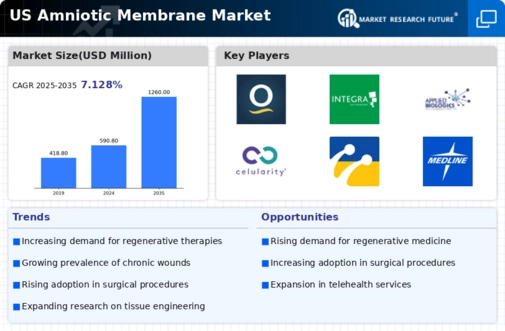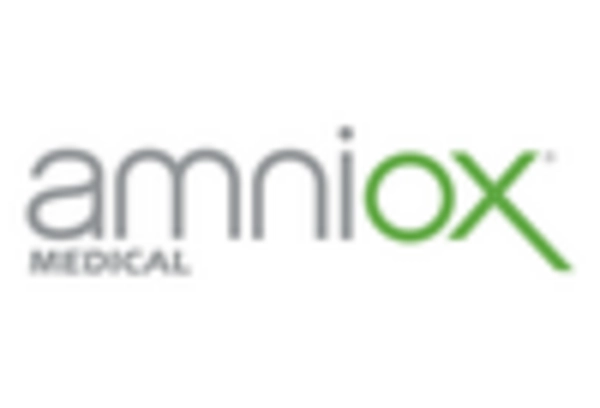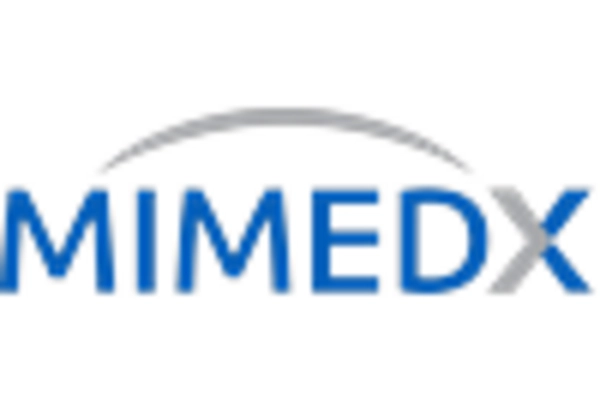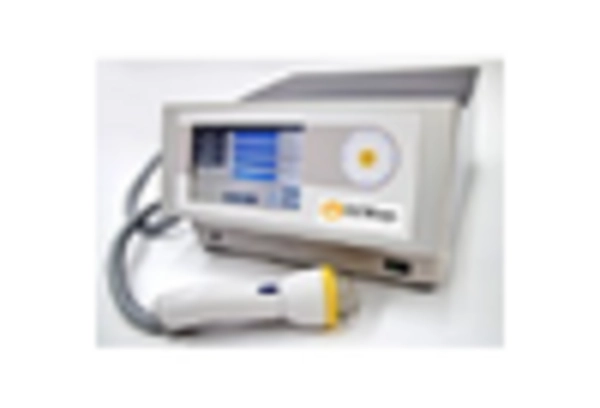Surge in Surgical Procedures
The amniotic membrane market is significantly influenced by the rising number of surgical procedures performed in the US. With an increasing aging population and a higher incidence of conditions requiring surgical intervention, the demand for surgical grafts and membranes is on the rise. In 2025, the total number of surgical procedures is expected to exceed 50 million, creating a substantial market for amniotic membranes used in surgeries such as ophthalmology, orthopedics, and plastic surgery. The unique properties of amniotic membranes, including their anti-inflammatory and antimicrobial effects, make them a preferred choice among surgeons, thereby driving growth in the amniotic membrane market.
Supportive Reimbursement Policies
The amniotic membrane market is positively impacted by supportive reimbursement policies that facilitate access to these advanced therapies. As insurance providers recognize the clinical benefits of amniotic membranes in treating various conditions, reimbursement rates for procedures involving these membranes are becoming more favorable. This trend is crucial for healthcare providers, as it alleviates financial burdens associated with innovative treatments. In 2025, it is estimated that reimbursement for amniotic membrane applications will cover approximately 70% of the associated costs, encouraging more practitioners to adopt these solutions. The alignment of reimbursement policies with clinical efficacy is likely to drive growth in the amniotic membrane market.
Rising Demand for Wound Care Solutions
The amniotic membrane market is experiencing a notable increase in demand for advanced wound care solutions. This trend is driven by the growing prevalence of chronic wounds, such as diabetic ulcers and pressure sores, which require effective treatment options. The market for wound care in the US is projected to reach approximately $20 billion by 2026, indicating a robust growth trajectory. Amniotic membranes, known for their regenerative properties, are increasingly utilized in these applications, providing a natural scaffold for tissue repair. As healthcare providers seek innovative solutions to improve patient outcomes, the adoption of amniotic membranes in wound care is likely to expand, thereby propelling the overall market forward.
Growing Awareness of Regenerative Medicine
The amniotic membrane market is benefiting from the increasing awareness and acceptance of regenerative medicine among healthcare professionals and patients. As the understanding of the potential benefits of regenerative therapies expands, more practitioners are incorporating amniotic membranes into their treatment protocols. This shift is reflected in the rising number of clinical studies and publications highlighting the efficacy of amniotic membranes in various applications. The regenerative medicine market in the US is projected to reach $100 billion by 2026, suggesting a favorable environment for the amniotic membrane market to thrive. The integration of amniotic membranes into regenerative medicine practices is likely to enhance their utilization and acceptance.
Technological Innovations in Processing Techniques
The amniotic membrane market is poised for growth due to advancements in processing techniques that enhance the quality and efficacy of amniotic membranes. Innovations such as cryopreservation and lyophilization are improving the shelf life and usability of these membranes, making them more accessible for clinical applications. As processing technologies evolve, the ability to produce high-quality amniotic membranes that retain their biological properties is becoming more feasible. This is particularly relevant in the context of the increasing demand for allografts in surgical procedures. The market for processed amniotic membranes is expected to grow at a CAGR of over 15% through 2026, indicating a strong potential for expansion in the amniotic membrane market.

















Leave a Comment